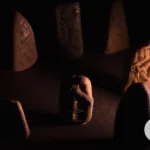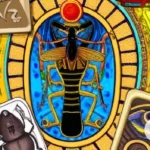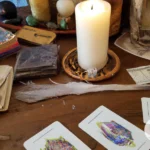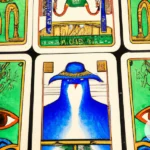Throughout the centuries, Tarot cards have captivated and perplexed people with their rich symbolism and enigmatic meanings. Their origins are shrouded in mystery, with theories ranging from ancient Egypt to medieval Europe. Yet the Tarot has persisted, evolving over time and inspiring new interpretations and uses. In this article, we will delve into the fascinating history of Tarot cards, explore their varying cultural and historical contexts, and see how they have come to be one of the most beloved divination tools in the world.
The Origins of Tarot Cards
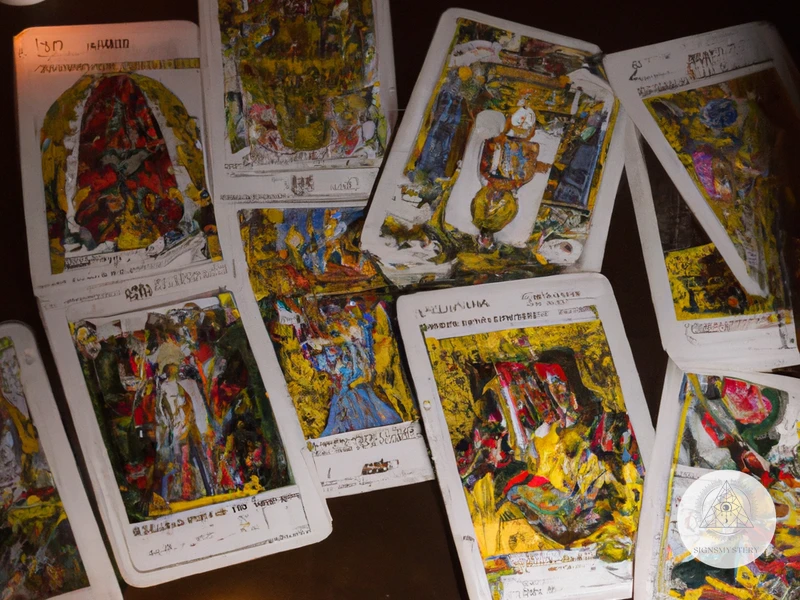
As we delve into the mysterious history of Tarot cards, we are met with a sense of perplexity surrounding their origins. There are many theories that attempt to explain the roots of Tarot cards, but none can provide a definitive answer. Some believe that they have ancient origins, while others claim that they were created during the Renaissance period. Despite this uncertainty, one thing is certain: Tarot cards have had a profound impact on the world of divination and mysticism. Let’s explore some of the theories surrounding the origins of Tarot cards.
Ancient Roots
In tracing the ancient roots of tarot cards, historians have found evidence of card games dating back as far as the 9th century in China. However, the true origins of tarot cards remain unclear, as they only began to surface in historical records in Italy in the 15th century. Some theories suggest that they may have originated in ancient Egypt or even India, but there is little concrete evidence to support these claims.
What is known is that the earliest tarot cards were not used for divination or spiritual purposes. Instead, they were a part of popular card games played throughout Europe. The cards themselves were similar to modern-day playing cards, featuring four different suits and numbered cards, as well as court cards similar to kings, queens, and knights.
It wasn’t until the 18th century that tarot cards began to be used for divination and esoteric purposes. At this time, French occultists began to see the tarot as a tool for accessing spiritual knowledge and understanding the mysteries of the universe. This led to the creation of new tarot decks featuring esoteric symbols and allegorical images with deeper meanings beyond their use in card games.
Despite the uncertain origins of tarot cards, their long and fascinating history has left an undeniable mark on popular culture and spirituality. From their humble beginnings as simple playing cards to their use as powerful tools for divination and self-discovery, tarot cards continue to captivate and inspire people all over the world to this day.
The First Tarot Deck
The creation of the first tarot deck is shrouded in mystery and speculation. While the origins of tarot cards can be traced back to ancient Egypt, the first known tarot deck was created in Italy in the fifteenth century. This deck, known as the Visconti-Sforza deck, was commissioned by the Duke of Milan’s family and was likely used for entertainment purposes.
The Visconti-Sforza deck consisted of 78 cards and was divided into two sections: the major arcana and the minor arcana. The major arcana consisted of 22 cards that depicted various symbolic figures, such as The Fool, The Magician, and The High Priestess. The minor arcana, on the other hand, consisted of 56 cards that were divided into four suits: swords, cups, coins, and batons (or wands).
The symbolism found in the Visconti-Sforza deck laid the groundwork for future tarot decks, and it is believed that each card had a specific meaning that was used for divination and fortune-telling. While it is unclear whether the Visconti-Sforza deck was used for divination during its creation or if it was solely used for entertainment, it is clear that it paved the way for the development of tarot cards as a tool for divination.
Today, the Visconti-Sforza deck is a valuable artifact that is housed in various museums and private collections. Its influence can be seen in many of the tarot decks that are used today.
If you want to know more historical facts about other types of divination cards, read about Oracle Decks History or if you are interested in famous tarot decks and their creators, click on Famous Tarot Card Decks & Creators link.
Early Interpretations
Historians and scholars have long debated the significance and purpose of the early tarot decks. Some argue that they were simply used for card games, while others insist that they were always intended for divinatory purposes. One theory holds that the cards were originally designed as a symbolic representation of the medieval worldview, drawing on elements of Christian, pagan, and classical traditions.
This theory is supported by the fact that many early tarot decks feature allegorical images that are rich in symbolism and meaning. For example, the popular Rider-Waite-Smith deck, which was first published in 1910, includes iconic images such as the High Priestess, the Fool, and the Tower, all of which are steeped in mystical and esoteric symbolism that can be traced back to ancient myth and legend.
Other interpretations of the early tarot decks focus more on their use as tools for divination and fortune-telling. According to this view, each card in the deck has a specific meaning or significance, and can be used to gain insight into a variety of different situations and circumstances. Early practitioners of this type of divination would rely on the cards to provide guidance and insight into everything from romantic relationships to financial matters.
Over time, the meaning and interpretation of the tarot cards has evolved and expanded, with new decks and traditions emerging. Today, there are countless variations of the tarot deck available, each with its own unique symbolism, interpretation, and style. Some modern decks draw heavily from popular culture and contemporary references, while others harken back to the traditional motifs and themes of the early Renaissance era.
Despite these many variations and interpretations, the tarot continues to be a popular and widely-recognized tool for spiritual seeking and personal growth. Whether used for divination, personal reflection, or simply as a source of inspiration and guidance, the rich history and timeless symbolism of the tarot continues to captivate and fascinate people around the world.
If you want to learn more about the evolution of divinatory tools, check out our article on the rise of oracle cards, or if you are interested in the symbolism of tarot, take a look at our article on the symbolism of tarot and oracle decks. Alternatively, for a more in-depth understanding of how tarot fits into hermetic philosophy, take a look at our guide on tarot and hermetic philosophy.
Tarot Cards in Europe
As the popularity of Tarot expanded, so did its cultural significance in Europe. The intricate illustrations and ancient symbolism of the cards were admired for their artistic value, even as the deck became widely known as a tool for divination and fortune-telling. The history of Tarot in Europe is a fascinating tale of mysticism and mystique, with connections to the Renaissance, esoteric movements, and the rise of modern occultism. Today, Tarot continues to captivate and enchant individuals from all walks of life – from artists and intellectuals to everyday seekers of spiritual guidance. Its influence can even be seen in the rise of oracle cards and its pervasive presence in pop culture. Let’s dive deeper into the rich history of Tarot in Europe.
The Renaissance Connection
During the Renaissance period, tarot cards began to gain popularity among the nobility of Europe. The intricate designs and symbolism of the cards appealed to the artistic sensibilities of the era, and their use in divination and fortune-telling made them popular among those seeking guidance and insight.
The Visconti-Sforza Deck
One of the earliest surviving tarot decks from this period is the Visconti-Sforza deck, created in the mid-15th century for the Duke of Milan. This deck still exists in partial form, and its intricate illustrations have inspired many modern tarot decks.
The Tarot de Marseille
Another important tarot deck from the Renaissance era is the Tarot de Marseille, which originated in southern France in the late 16th century. This deck features bold, colorful images and simplified designs, making it easier to mass-produce and distribute.
The Hermetic Order of the Golden Dawn
In the late 19th century, a group of British occultists known as the Hermetic Order of the Golden Dawn further popularized tarot cards, developing new interpretations and esoteric meanings for the cards. This group’s influence can be seen in many modern tarot decks, which often include symbols and imagery associated with the Golden Dawn’s teachings.
The fascination with tarot cards that began during the Renaissance continues to this day, with new interpretations, designs, and uses constantly emerging. From the rise of oracle cards to their role in pop culture, tarot cards remain a fascinating and influential part of our cultural heritage.
Early Divination and Fortune-Telling
During the Middle Ages, it became popular to use tarot cards for divination and fortune-telling. In fact, the cards were originally created for this purpose in the 15th century. It was believed that the cards held mystical and esoteric meanings that could reveal insights about the future, as well as provide advice and guidance for decision-making.
One of the earliest recorded uses of tarot cards for divination was in Italy in the late 14th century. The cards were used by wealthy aristocrats for entertainment, but gradually spread to the common people who began using them for divination. The tarot deck was divided into two groups: the Major Arcana and the Minor Arcana. The Major Arcana consisted of 22 trump cards which were used to represent major life events and themes, while the Minor Arcana comprised the rest of the deck and was used for more specific guidance and advice.
In the early days of tarot cards being used for divination, the interpretation of the cards relied heavily on the intuition and clairvoyance of the reader. However, over time, specific meanings and interpretations were assigned to each of the cards. This enabled more people to learn and practice the art of divination using tarot cards.
Tarot cards also played a role in the development of other forms of divination, such as cartomancy and oracle cards. In fact, oracle cards have become increasingly popular in recent years and have even surpassed tarot cards in terms of popularity in some circles. To learn more about the rise of oracle cards, check out our article on the rise of oracle cards.
Tarot cards have also become a part of popular culture, appearing in movies, TV shows, and more. They continue to intrigue and fascinate people all over the world to this day. Want to learn more about tarot cards in pop culture? Check out our article on tarot cards in pop culture.
Esoteric and Mystical Meanings
As tarot cards became more popular and widely used across Europe, they began to take on esoteric and mystical meanings. These meanings were often tied to various symbolic elements of the cards themselves.
The Major Arcana
The Major Arcana cards in particular were seen as holding deeper meaning beyond their literal interpretations. Some believed that these cards represented stages in the journey of the human soul, while others saw them as representing the paths that one could take in the quest for enlightenment or spiritual growth.
The Suit of Swords
The suit of swords was often associated with the element of air and the concept of intellect. This suit was seen as helping individuals to develop their mental faculties and to gain a greater understanding of the world around them.
The Suit of Cups
The suit of cups was linked to the element of water and was often associated with emotions and intuition. These cards were believed to help people gain a better understanding of their own emotional states and to develop greater empathy for others.
The Suit of Wands
The suit of wands was often tied to the element of fire and was seen as representing creativity and inspiration. These
Subscribe to Our Newsletter
Sign up to receive the latest news and updates.
The Suit of Pentacles
Finally, the suit of pentacles was linked to the element of earth and was often associated with material possessions and practical matters. These cards were believed to help people develop a greater sense of responsibility and to find ways to achieve greater stability and security in their lives.
The esoteric and mystical meanings within tarot cards allowed individuals to explore deeper aspects of themselves and their place in the world. These symbolic representations allowed for greater introspection and personal growth, making tarot cards a popular tool for those seeking spiritual enlightenment or personal transformation.
The Modern Tarot
As the world of divination and mysticism evolved, so did the Tarot cards. With each passing century, new meanings were added to the existing ones, and the use of the cards expanded beyond divination. Today, Tarot cards are celebrated as a tool for storytelling, introspection, and inspiration, and they have found a place in modern pop culture, art, and literature. Let’s delve deeper into the fascinating history of the modern Tarot and explore its diverse interpretations and uses.
Revivals and Renewals
Following a period of decline, the tarot experienced a renaissance during the late 19th and early 20th centuries. This revival was led by a handful of occultists and mystics who sought to unlock the esoteric meaning of the cards.
One of the most influential figures of this era was Aleister Crowley, an English occultist who created his own tarot deck known as the Thoth Tarot. Crowley drew from a range of mystical traditions to develop his own unique interpretation of the cards, which he believed could reveal profound spiritual truths.
Other notable figures from this era included Arthur Edward Waite and Pamela Colman Smith, who collaborated on the creation of the Rider-Waite-Smith deck. This deck, which is still one of the most widely used today, features distinctive illustrations and symbolism that have inspired countless other tarot decks.
In addition to these new decks, tarot enthusiasts also began to experiment with new interpretations and uses for the cards. Some began to use tarot as a tool for psychological exploration and self-discovery, while others used the cards as a means of divination and fortune-telling.
The revival of interest in tarot during this era helped cement the cards’ place as a valuable tool for spiritual exploration and self-discovery. Today, the tarot is used by people all over the world for a wide range of purposes and continues to inspire new interpretations and innovations.
New Interpretations and Uses
As the popularity of tarot cards grew throughout the 20th century, tarot practitioners began to explore new interpretations and uses for the cards. These innovative approaches went beyond traditional divination and fortune-telling, expanding the tarot’s potential as a tool for spiritual growth and introspection.
One of the most prominent new interpretations of the tarot was developed by psychologist Carl Jung and his protégé Marie-Louise von Franz. They viewed the cards as a means of accessing the unconscious mind and started using them as a therapeutic tool for their patients. This approach, known as Jungian tarot, emphasized the symbolic and archetypal meanings of the cards, and helped individuals gain insight into their own psyche.
Another popular interpretation of the tarot was created by Rachel Pollack in her book “78 Degrees of Wisdom”. This feminist interpretation highlighted the empowering possibilities of the cards, suggesting that they could be used for personal transformation and self-discovery.
In recent years, new uses for the tarot have emerged, including tarot-based creativity workshops, and tarot-inspired meditation practices. Tarot readers have experimented with using the cards for decision-making and problem-solving, and some have even integrated the tarot into their spiritual practices, using it to connect with their intuition and gain deeper insights into their spiritual path.
Table:
| New Interpretations and Uses | |
|---|---|
| Jungian tarot | Viewing the cards as a means of accessing the unconscious mind, this approach emphasized the symbolic and archetypal meanings of the cards, helping individuals gain insight into their own psyche. |
| Feminist interpretation | Highlighting the empowering possibilities of the cards, this interpretation suggested that they could be used for personal transformation and self-discovery, rather than just for divination and fortune-telling. |
| New uses | These include tarot-based creativity workshops, tarot-inspired meditation practices, and using the cards for decision-making and problem-solving. Some practitioners also integrate the tarot into their spiritual practices, using it to connect with their intuition and gain deeper insights into their spiritual path. |
Tarot Around the World
Throughout history, tarot cards have made their way around the world, each culture putting its own unique spin on the cards and their meanings. Here are a few fascinating examples:
- Latin America: In countries like Mexico and Brazil, tarot takes on a spiritual and religious significance. These cultures often incorporate Catholic imagery and symbolism into the cards, infusing them with a sense of divine guidance.
- China: Although tarot has only gained popularity in China relatively recently, there are now several Chinese-themed tarot decks available. These decks incorporate Chinese mythology and folklore, making them particularly interesting to those familiar with traditional Chinese culture.
- Japan: Tarot cards have been popular in Japan since the late 19th century, and today, Japan produces some of the most beautiful and unique tarot decks in the world. Many of these decks incorporate traditional Japanese art styles and themes, such as ukiyo-e (woodblock prints).
- Africa: While tarot isn’t widely practiced in Africa, some tarot decks have been created that incorporate African mythology and symbolism. These decks can be a fascinating way to explore African culture and history.
- United States: Tarot has been popular in the United States for decades, and today there are hundreds if not thousands of different tarot decks available. New Age and Pagan communities, in particular, have embraced the cards as a tool for spiritual growth and self-discovery.
As tarot continues to grow in popularity worldwide, it’s safe to say that we can expect even more interesting interpretations and adaptations of the cards to emerge.
Conclusion
In conclusion, the history of tarot cards is a fascinating journey filled with mystery, intrigue, and cultural significance. From their ancient roots to their modern-day interpretations, tarot cards have been used for a variety of purposes, including divination, fortune-telling, and self-discovery.
Despite their controversial reputation, tarot cards have continued to evolve and gain popularity over the centuries, thanks to revivals and renewals within the esoteric and spiritual communities. In today’s world, tarot cards are not only used for divination but also for creative inspiration, personal growth, and even as a form of therapy.
One of the most remarkable things about tarot cards is their ability to transcend cultural boundaries and speak to people of different backgrounds and beliefs. Whether you’re in Europe, Africa, Asia, or the Americas, tarot cards have a universal appeal that is both timeless and relevant.
So, whether you’re a seasoned tarot reader or a curious novice, exploring the history of tarot cards can provide you with valuable insights into their enduring significance and relevance. From their humble beginnings as a simple card game to their modern-day significance as a tool for spiritual growth and insight, tarot cards continue to inspire and fascinate people around the world.
Frequently Asked Questions
What is a Tarot Card?
A Tarot Card is a tool used for divination and fortune-telling. It is a deck of 78 cards, each with symbolic images and meanings.
Where did Tarot Cards originate?
The exact origin of Tarot Cards is uncertain, but many believe they have ancient roots in the Middle East and Asia.
What is the difference between Tarot Cards and Oracle Cards?
While both are used for divination, Tarot Cards have a specific structure and set of meanings, while Oracle Cards have more flexibility in their design and interpretation.
Can anyone learn to read Tarot Cards?
Yes, with practice and study, anyone can learn to read Tarot Cards. However, it is important to approach Tarot with respect and intention.
Are Tarot Cards associated with any specific religion or belief system?
Tarot Cards are not tied to any particular religion or belief system. Their meanings and interpretations can be adapted to fit a variety of spiritual practices.
Do Tarot Cards predict the future?
Tarot Cards can offer insight and guidance, but they do not necessarily predict the future. The future is subject to change based on our actions and decisions.
What are some common Tarot Card spreads?
Common Tarot Card spreads include the Celtic Cross, the Three-Card Spread, and the Horseshoe Spread.
Are there any risks involved in using Tarot Cards?
While Tarot Cards themselves are not dangerous, it is important to approach them with respect and consideration. It is also wise to seek guidance from a trained professional if using Tarot for serious or sensitive issues.
Can Tarot Cards be used for self-reflection and personal growth?
Yes, Tarot Cards can be a valuable tool for self-reflection and personal growth. They can help us gain insight into ourselves and our life paths.
Are there any famous historical figures associated with Tarot Cards?
Some famous figures associated with Tarot Cards include Italian noblewoman and poet, Isabella Visconti, and French occultist and ceremonial magician, Eliphas Levi.



